Also known as: Breton, Bouchet
Table of Contents
Primary Flavors
- Strawberry
- Raspberry
- Bell Pepper
- Crushed Gravel
- Chili Pepper
Taste Profile
Cabernet Franc has proven to be a robust variety, consistently producing good-quality wines in a range of climates. This highlights its diverse taste profile: tart red fruit flavors in cooler climates and richer, dried fruit flavors with fuller body in warmer areas such as Tuscany and California. You’ll also find a mixture of savory, tart, and herbal flavors in moderate climates like Bordeaux.
On the nose, Cabernet Franc has a distinctive herbaceous and bell-pepper aroma. It can also smell like red fruit and sometimes even pencil lead. In cooler climates, you’ll find violet notes, and in warmer climates, expect dried fruit flavors and cayenne pepper notes.
On the palate, Cabernet Franc has high levels of zesty acidity. It can also have relatively high tannins, although not as high as those of Cabernet Sauvignon. Cooler-climate wines have slightly lower tannins, while warmer-climate wines tend to have more.
How to Serve Cabernet Franc Wine
Cabernet Franc should be served just below room temperature, between 60-68°F (15-20°C). This will allow the aromas to open up, but will keep it cool enough to prevent higher alcohols from interfering with the aromas.
A universal or standard red wine glass is perfect for Cabernet Franc. This glass ensures the wine gets enough air and funnels the aromas directly to the nose. Lighter styles don’t need much decanting, but fuller-bodied wines, such as Bordeaux and Tuscan wines, need at least 30 minutes.
Cabernet Franc gets very savory with age. The lighter styles can improve over 2-5 years, but the fuller-bodied, more tannic wines can last 5-10 years or even longer if you get a really great example.

SERVE
60–68°F / 15-20°C
GLASS TYPE
Universal
DECANT
30 minutes
CELLAR
5-10 Years
Cabernet Franc Food Pairing
Due to its range of styles and naturally high acidity, Cabernet Franc pairs well with a wide variety of foods. Its higher acidity makes it possible to pair it with tomato-based dishes, vinegar-based sauces (smoky BBQ, anyone?), or rich veggies like black beluga lentils. If you learn only one tip about pairing Cabernet Franc, match it with real herbs in your dish.
Depending on the style of Cabernet Franc, you can have a wide range of pairing opportunities. Lighter-bodied styles from the Loire Valley are great with goat cheese, eggplant parmesan, tomato-based dishes, and light meats like chicken or turkey.
Full-bodied styles from Bordeaux and Italy work well with roasted meats, such as roasted lamb, wild game, and even rich lentil stews.
The herbaceous nature of Cabernet Franc means it pairs well with dishes that include fresh herbs, too.
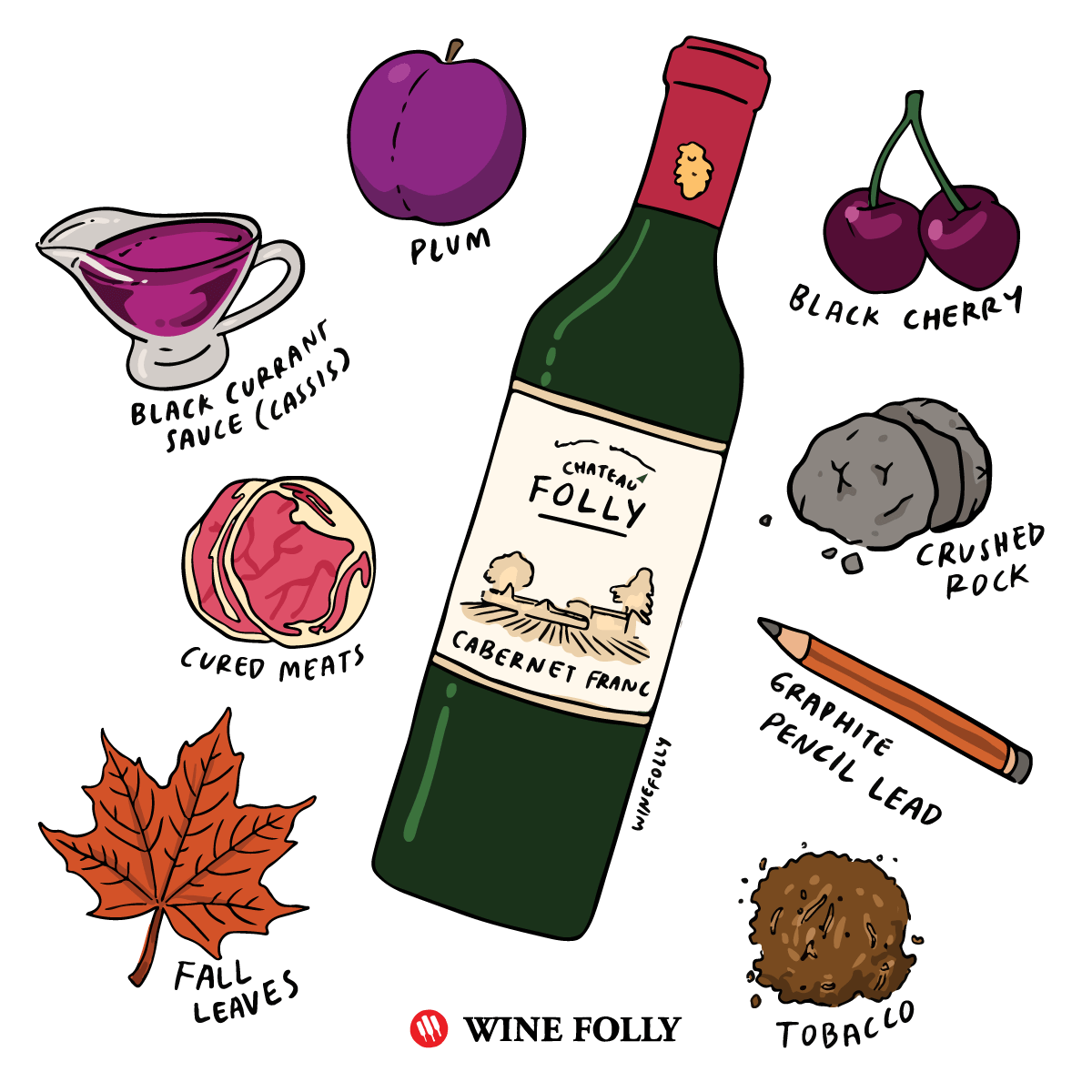
5 Fun Facts About Cabernet Franc
- Cabernet Franc is a parent to Cabernet Sauvignon. The crossing occurred sometime during the middle 1600s around Bordeaux, France.
- One of the most treasured Cabernet Franc wines comes from the Saint-Émilion appellation in Bordeaux, made by Château Cheval Blanc.
- The herbaceous character in Cabernet Franc is caused by a group of aroma compounds called methoxypyrazines or “pyrazines” for short.
- The specific methoxypyrazine that contributes to the distinct flavor is 3-isobutyl-2-methoxypyrazine (IBMP), which is also found in Sauvignon Blanc.
- Cabernet Franc is also the parent grape of Merlot and Carménère.

Where it Grows
Cabernet Franc is originally from France, most likely from somewhere near Bordeaux. It still remains very popular in Bordeaux, particularly on the Right Bank where it produces some of the world’s most age-worthy wines. It has a second home in the Loire Valley, where it produces lighter styles thanks to the cool climate. Outside of France, you’ll find fuller-bodied, premium examples in Tuscany, California, and Chile.
- France: 79,881 acres (32,327 hectares)
- Italy: 13,813 acres (5,590 hectares)
- USA: 5,433 acres (2,199 hectares)
- Chile: 3,900 acres (1,578 hectares)
Total Vineyard Area – 121,845 acres (49,309 hectares) (Source: University of Adelaide, 2021)
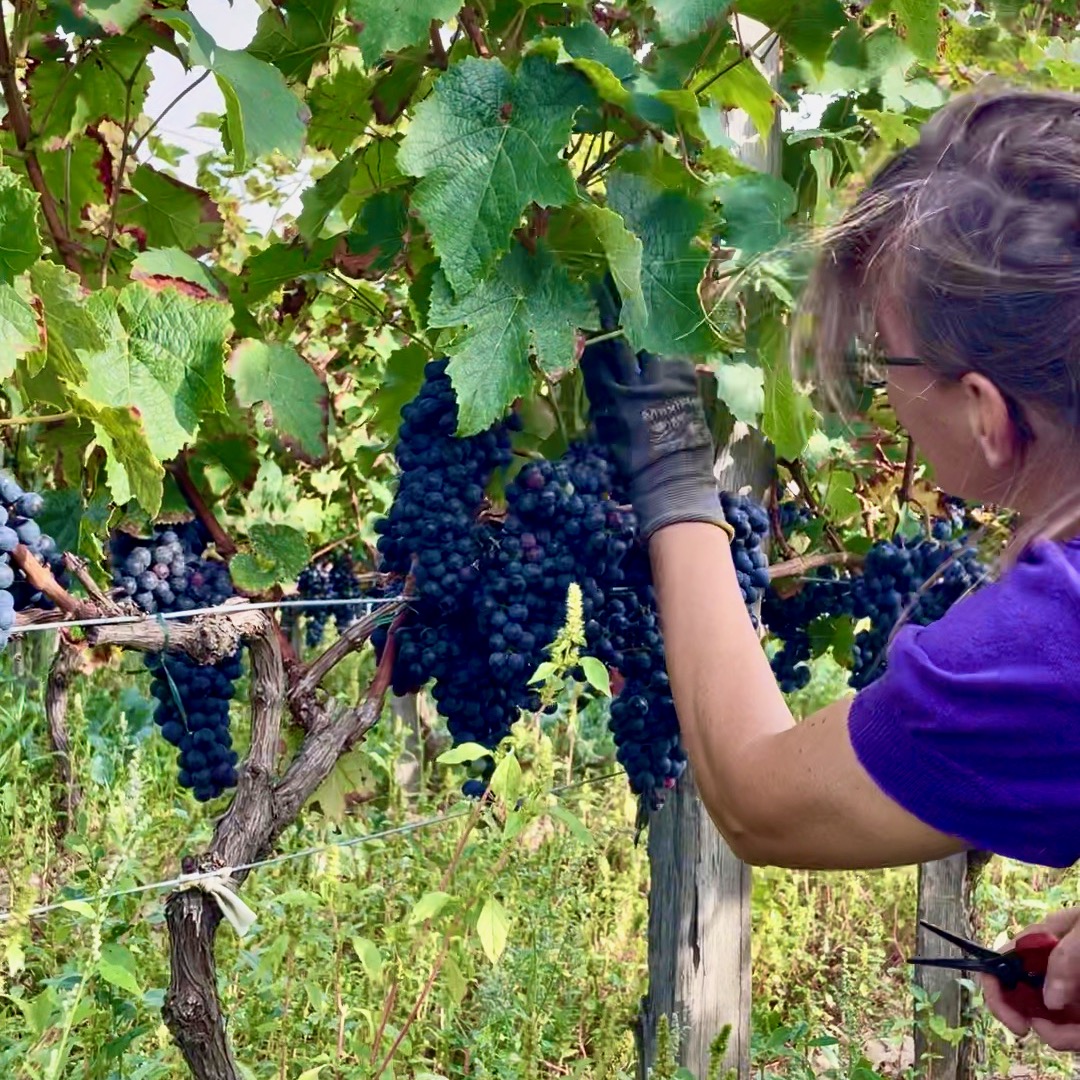
Bordeaux, France
What to expect: Normally found in blends with Merlot and possibly Cabernet Sauvignon, you won’t find much varietal Cabernet Franc in Bordeaux. However, it does contribute intense floral notes, acidity, and finesse not typically seen in the other Bordeaux varieties. Look to the Right Bank to find Cabernet Franc-dominant wines. Many of these are fuller-bodied, high in tannin, and can age for a decade.
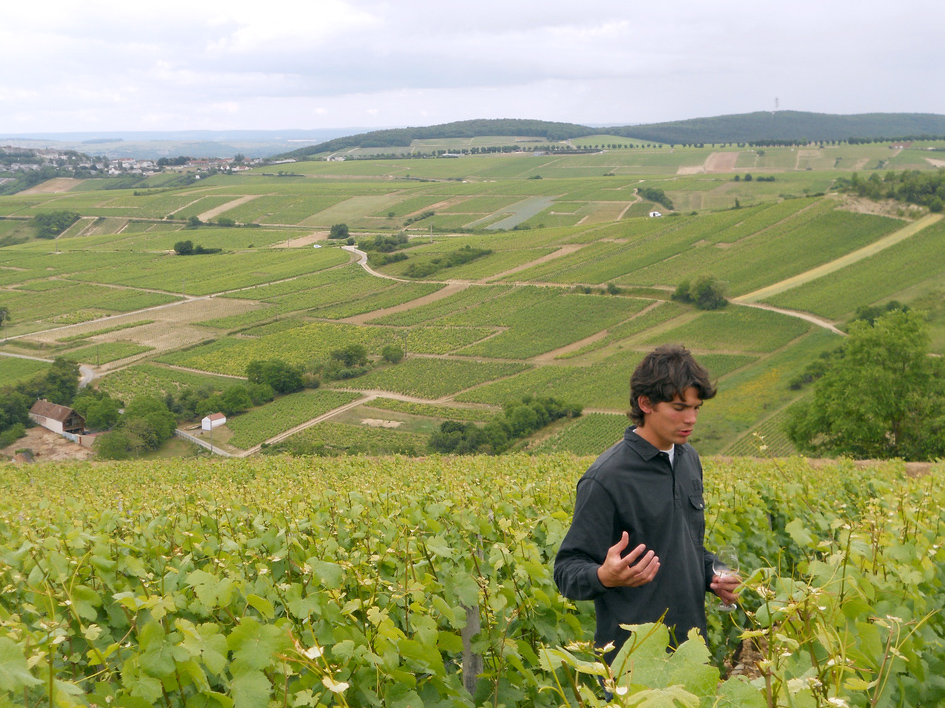
Loire Valley, France
What to expect: The Loire Valley, in northern France, is a cool-climate growing region, so you’ll find a lighter-bodied version of Cabernet Franc here, with lighter tannins and a focus on red fruit flavors, floral notes, and an herbal side. If you like Pinot Noir or Beaujolais, give Loire Cabernet Franc a try.
Chinon AOC: This is the best-known appellation in the Loire Valley for Cabernet Franc. A great example will smell of roasted red pepper, raspberry sauce, jalapeño, fresh raspberry, and wet gravel.
On the palate, you’ll taste high acidity and moderately low tannin, with flavors of sour cherry, smoky tomato, dried oregano, and sweet pepper dominating. The taste will burst through your palate and drop out quickly with a subtle tingle from the acidity.

Tuscany, Italy
What to expect: Italy is the second largest producer of Cabernet Franc. Much of it is made in Friuli-Venezia Giulia, but perhaps the most well-known Italian Cabernet Franc wines come from Tuscany.
Since Cabernet Franc is not indigenous to Italy and was removed from the Italian DOCG system, these wines are lovingly referred to as Super Tuscans.
Bolgheri DOC: This denomination produces amazing Super Tuscans, many of which are based on Cabernet Franc. A great example of a “Super Tuscan” Cabernet Franc will have ripe and rich aromas of black cherry, blackberry, cocoa, red pepper flakes, and a hint of chalky dry gravel and leather. This is due to the warmer climate.
On the palate, elevated alcohol will produce boldness, with mocha, cinnamon, and plum flavors complemented by medium-high acidity and moderately high tannin. It’s common to find Cabernet Franc from Tuscany aged in French oak for additional body and richness. These are age-worthy wines.
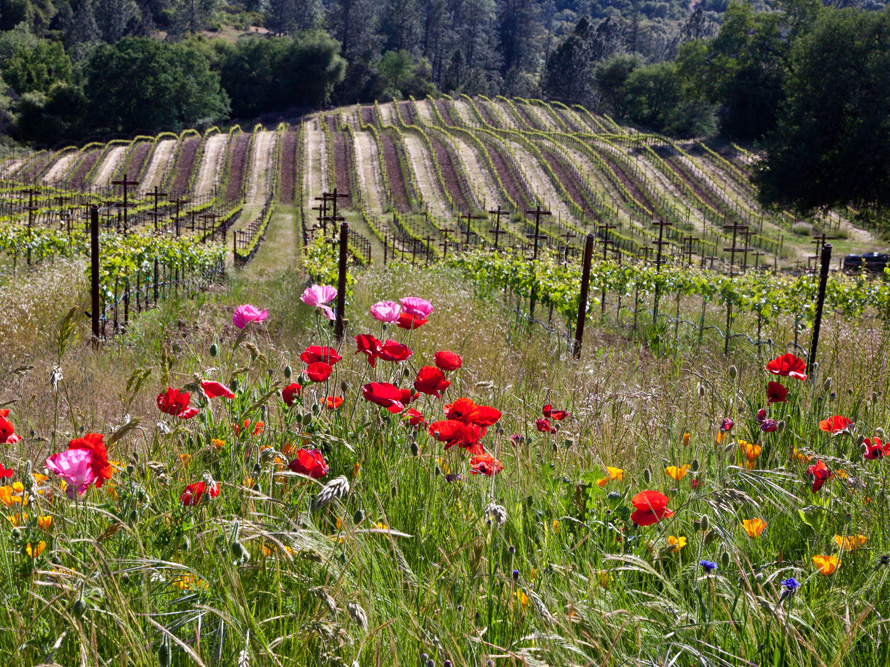
California, USA
What to expect: Cabernet Franc grows throughout California, but few regions champion it as a single-varietal wine. Enter the Sierra Foothills! This off-the-radar region, situated in the foothills of the Sierra Nevada Mountains, typically produces an opulent, fruit-forward style due to its sunny and warm climate.
Sierra Foothills: A great example of Sierra Foothills Cabernet Franc will have bold aromas of sweet strawberries, raspberries, mint, and roasted jalapeño. On the palate, you’ll taste bold fruit from elevated alcohol and flavors of chocolate and baking spices from oak aging.
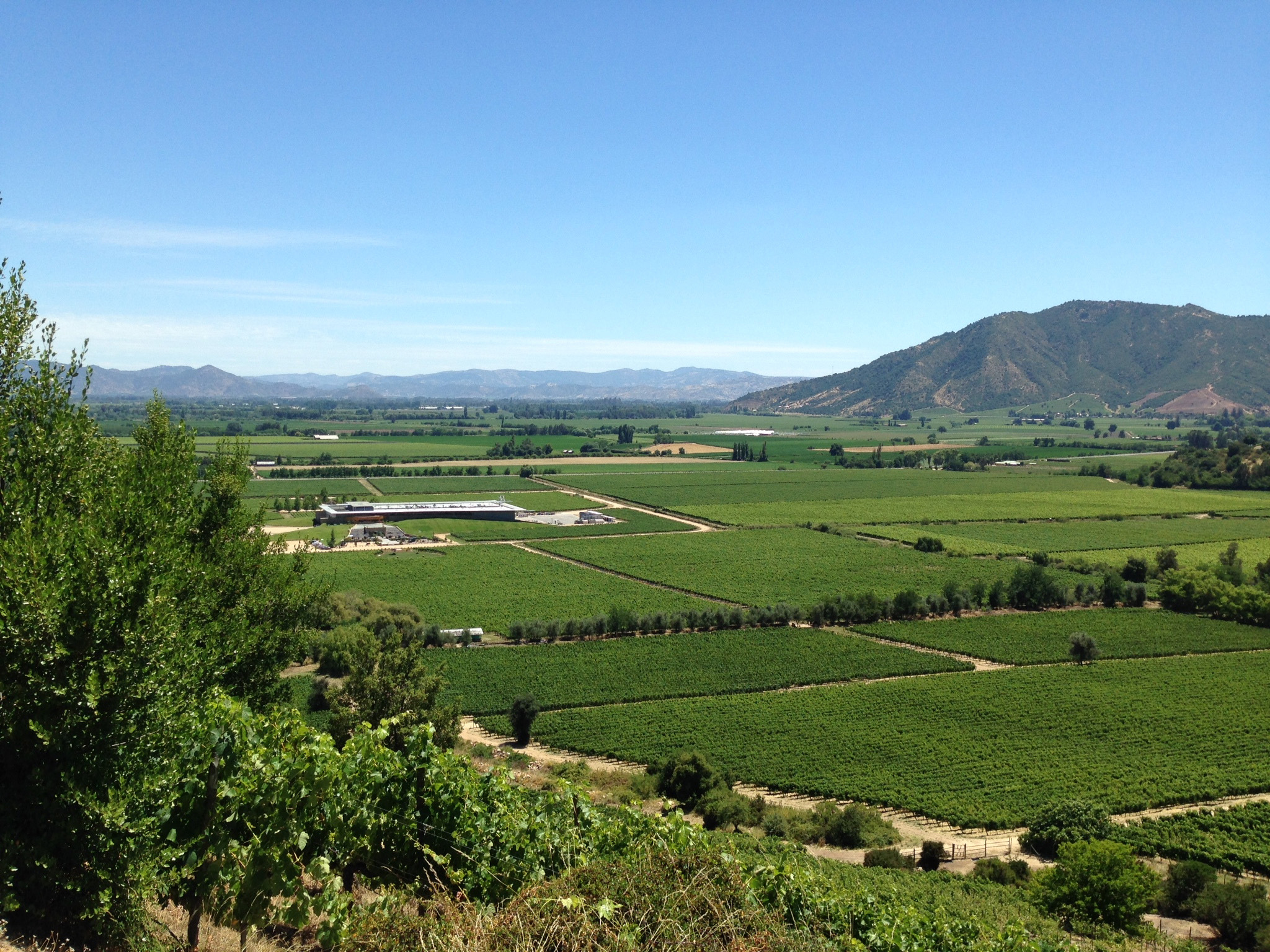
Chile
What to expect: Only recently has Chile started to offer single-varietal Cabernet Franc wines. Before, the wines had always been blended into Chile’s ubiquitous Bordeaux-style blend.
Chile itself is quite warm and sunny, but due to the influence of Pacific Ocean breezes moving toward the Andes Mountains, Chilean wines maintain freshness and elegance. That said, the Colchagua Valley is farther inland and offers a riper style of Cabernet Franc.
Colchagua Valley: A great example of Colchagua Chilean Cabernet Franc will have bolder black cherry, milk chocolate, and green peppercorn aromas. The taste will burst with an initial bolt of acidity, and juicy berry fruit will be smoothed out on the finish with baking spice-like flavors from oak aging. Tannins are moderately high but ripe. Expect to spend $25-$35 for a great example.
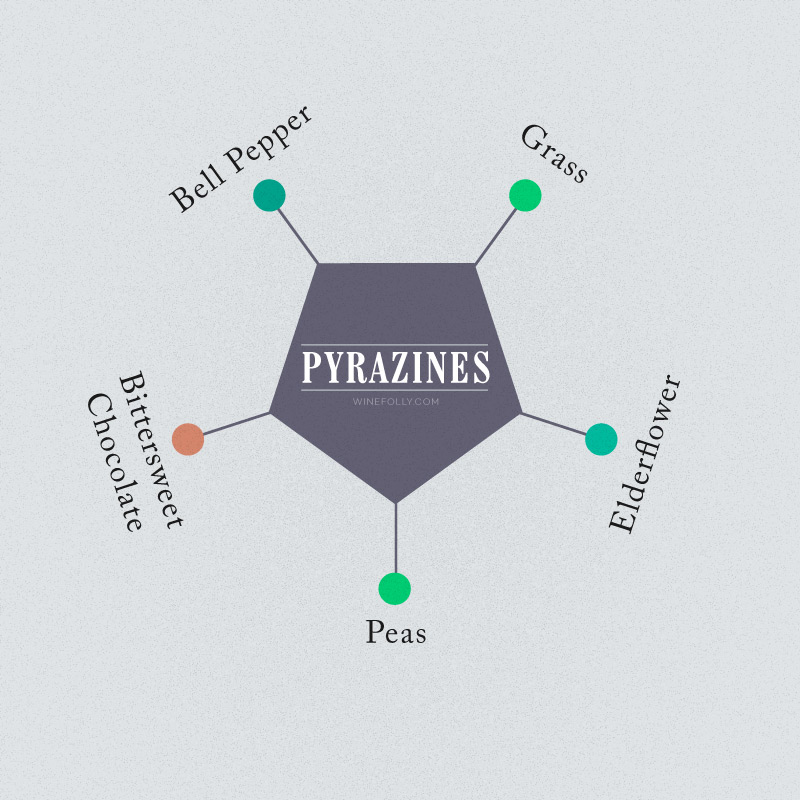
In-Depth Knowledge
Take a deep dive into understanding the complex nature of Cabernet Franc.
The Green Machine
Methoxypyrazines are responsible for Cabernet Franc’s distinctive bell pepper and herbal aromas. These compounds naturally occur in grape skins as a natural defense against pests. And it’s part of why this grape successfully grows in such a diverse range of places.
Cabernet Sauvignon, sharing genetic heritage with Cabernet Franc, also exhibits this trait, though the expression can vary based on factors such as climate and ripeness at harvest. Sauvignon Blanc, too, is known for methoxypyrazine-driven aromas, though its profile leans more towards fresh-cut grass or gooseberry. The common thread among these varieties is the critical role of methoxypyrazines, specifically IBMP, in defining their unique aromatic identities.

The Parent Grape
Cabernet Franc is the progenitor (the parent) of some of the most celebrated grape varieties in the world. This work has been done by grape scientists, called ampelographers, through DNA profiling.
Cabernet Franc with Sauvignon Blanc created Cabernet Sauvignon.
Furthermore, the same parentage is responsible for the development of Merlot.
Finally, Carménère has its lineage tracing back to Cabernet Franc as well.
Therefore, while Cabernet Franc may only sometimes be the main focus in viticulture, its genetic influence underpins the lineage of several widely recognized and valued wine grape varieties.
